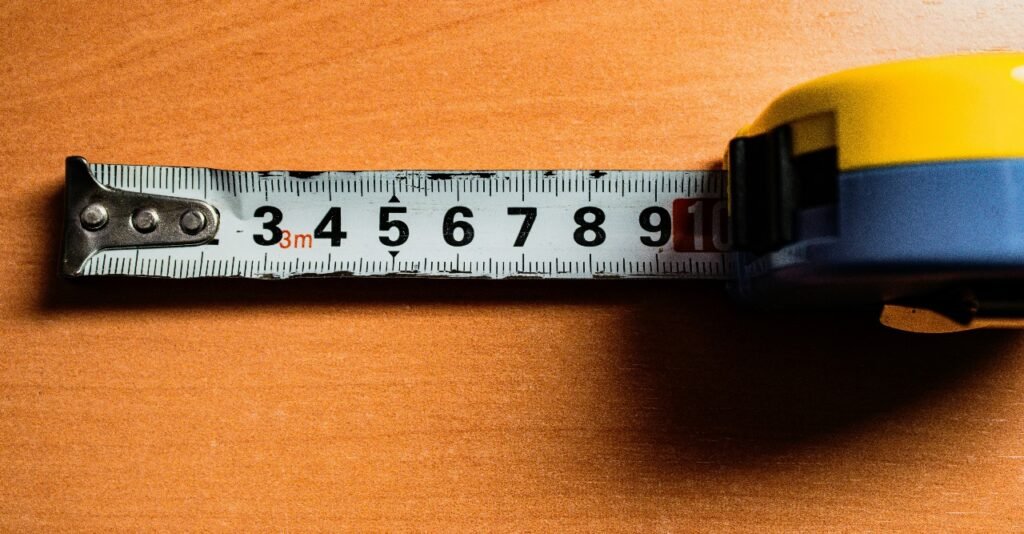In construction, architecture, and even simple home improvement projects, accurate measurements are critical. Whether you’re planning a new room, designing a garden, or building furniture, understanding length conversions ensures that your plans translate correctly from one unit system to another. With projects often involving international suppliers and design inspirations, the ability to easily switch between metric and imperial units can save time and prevent costly mistakes.
Why Length Conversion Matters in Everyday Life
Length conversion might sound like a topic limited to engineers and architects, but it plays a role in many daily activities. For example, if you purchase a rug from an international online store, the dimensions might be listed in meters, but you’re used to measuring spaces in feet. Without converting correctly, you might end up with something that’s either too small or too large for your intended space.
The most common scenario is converting meters to feet—a task made much easier with modern tools like a length converter, which quickly handles the math for you.
Metric vs. Imperial: Understanding the Two Main Systems
There are two primary measurement systems used worldwide:
Metric System: Used in most countries, this system measures length in millimeters (mm), centimeters (cm), meters (m), and kilometers (km). It’s based on powers of 10, making it easy to scale up or down.
Imperial System: Primarily used in the United States and a few other regions, this system uses inches, feet, yards, and miles. While it doesn’t have the straightforward decimal scaling of the metric system, it’s deeply ingrained in certain industries and regions.
Understanding both systems is essential for smooth communication in global projects.
The Basics of Converting Meters to Feet
When converting meters to feet, it’s important to remember that 1 meter is equal to approximately 3.28084 feet. This conversion factor allows you to translate any metric measurement into the imperial system accurately.
For example:
- 2 meters × 3.28084 = 6.56168 feet
- 5 meters × 3.28084 = 16.4042 feet
While the math is simple, errors can happen—especially in larger projects—so using a length converter ensures precision.
Common Scenarios Where You’ll Need Length Conversion
- Real Estate and Interior Design – Property listings often use local measurement standards. Converting dimensions helps buyers and renters understand space in familiar terms.
- Construction and Engineering – Building materials and plans may use different units depending on the source, requiring constant conversion.
- Sports and Event Planning – Whether it’s a running track, swimming pool, or field layout, exact dimensions ensure compliance with regulations.
- Travel and Outdoor Activities – Hiking trail distances, tent sizes, and even fishing rod lengths may be listed in unfamiliar units.
- Education and Research – Science experiments often require conversions to align with specific standards.
Tools to Make Conversion Easier
In the past, people relied on printed conversion charts or manual calculations. Today, digital tools make the process much faster. Online calculators and mobile apps, such as a length converter, can instantly provide accurate results. Many even allow you to switch between multiple units beyond just meters and feet, such as inches, centimeters, or miles.
Tips for Accurate Conversions
- Double-check the source unit before converting—mistakenly converting centimeters to meters can drastically change your result.
- Be consistent with units throughout your project to avoid confusion.
- Round wisely—in construction, excessive rounding can lead to fitting issues.
- Use reliable tools to reduce human error.
- Understand context—sometimes, approximate measurements are fine (e.g., for personal projects), but precision is critical in professional work.
Real-World Example: Room Renovation
Imagine you’re renovating a living room and ordering a custom carpet from Europe. The supplier lists it as 4 meters by 5 meters. You’re used to thinking in feet, so you quickly calculate:
4 meters × 3.28084 ≈ 13.12 feet
5 meters × 3.28084 ≈ 16.4 feet
Now you know the carpet will be about 13 feet by 16 feet, which fits perfectly in your planned space.
Conversions Beyond Meters to Feet
While meters to feet is one of the most common conversions, you may also encounter centimeters to inches, kilometers to miles, or even nautical miles to kilometers. Many length converter tools allow you to select from a wide range of unit pairs, making them versatile for all sorts of needs.
The Importance of Standardization
In industries like aviation, medicine, and engineering, precise conversions are non-negotiable. Incorrect measurements can lead to safety hazards, legal issues, or failed projects. This is why many organizations implement strict guidelines for unit use and conversions.
Conclusion
Length conversion is more than a technical skill—it’s a bridge between two measurement worlds. Whether you’re a professional contractor, a student, or simply someone decorating a home, understanding how to convert meters to feet and other units will save you time, money, and frustration. Using a trusted length converter ensures accuracy and consistency, especially when dealing with international projects or purchases.
Q1: What is the easiest way to convert meters to feet?
Use an online length converter for quick and accurate results without manual calculations.
Q2: Why do some countries use meters while others use feet?\
It’s largely historical—most countries adopted the metric system, while the U.S. and a few others retained the imperial system.
Q3: How many feet are in one meter?
One meter equals approximately 3.28084 feet.
Q4: Is manual calculation reliable for conversions?
Yes, if done carefully—but a converter tool minimizes the chance of errors.
Q5: Can a length converter handle more than meters and feet?
Most modern converters can switch between dozens of units, including inches, miles, and centimeters.

